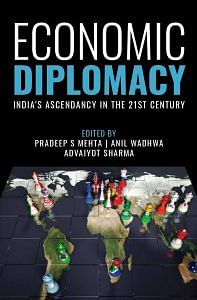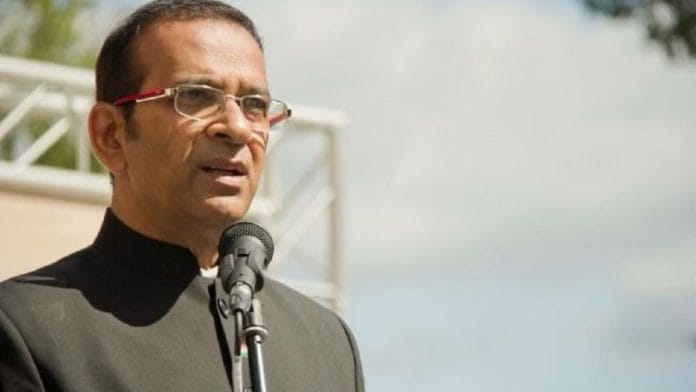Economic diplomacy at the end of the day is about diplomats leveraging opportunities overseas for the home country’s economic benefit. More broadly, it is about countries managing their foreign economic relations – including trade, investment, tourism and access to technology – to benefit their domestic economies. Economic diplomacy, which flourished in the decades of globalisation when the world shrank into a smaller inter-dependent village, needed to adapt yet again: to an era of de-globalisation in the third decade of the 21st century.
In fact, the larger framework for economic diplomacy should seek to balance commercial outreach with broader strategic foreign policy aims. Diplomats have moved from promoting trade agreements to more innovative means of dealing with a world in flux. The traditional instruments of promoting investment, exports and tourism have to be supplemented with additional pathways for achieving the national interest.
Diplomats of the times were witness to reforms in the 1990s that changed the business landscape for India. Examples abound of India securing economic benefits from geopolitical alignments or realignments. In the late 1990s, an astute Indian Ambassador in Moscow helped secured India’s energy security by facilitating a major stake in an oil asset in the Russian east, called Sakhalin. In recent times, India has approached the world with what could be described as strategic realism and economic pragmatism, rather than any rose-tinted idealism.
In 2008, India secured a nuclear deal with the US, allowing for greater nuclear trade and technologies to boost India’s nuclear energy ambitions. In 2022, as a tragic war unfolded in Europe, as costs of food, energy and fertilisers shot up sharply across the world, India could navigate the geopolitics to secure economic benefits. India’s strong relations with both warring sides helped the country secure cheap energy and fertilisers to benefit its people and mitigate the impact of the European war.
India’s digital public infrastructure now presents opportunities for global digital diplomacy, allowing India to share pioneering digital innovations with the world: while the Cowin app for vaccinations is available as a free open-source resource for countries that wish to adopt it, India is even willing to provide new technologies like digital currency and open network digital commerce to its partners across the world. The UPI digital payments system has now interested a dozen countries, including Singapore, and is available not just for the Indian diaspora but for other nationals in partner countries.
Economic Diplomacy in Canada
The opportunities to derive benefits for the Indian economy are particularly pronounced in the G7 advanced economies. Three examples from my own diplomatic assignment in Canada illustrate the use of creative economic diplomacy.
Trade Deal
Canada has been a reluctant trade partner for India. Protracted negotiations on a comprehensive trade agreement did not bear fruit through several rounds of discussion over a decade.
Bilateral trade had been complementary and was growing but remained well below potential, primarily because of distance, the gravity effect of the US market, information gaps and the lack of preferential tariffs. In 2010, India and Canada launched negotiations for an ambitious Comprehensive Economic Partnership Agreement (CEPA), but no substantial progress could be made since divergences remained on contentious issues, such as labour, environmental standards and services. While India tried to protect its agricultural market, Canada did the same for the services sector. After the visit of Canadian Prime Minister Justin Trudeau to India in February 2018, political relations between India and Canada also came under strain and the talks were effectively suspended.
When I joined as High Commissioner of India in Canada, just a few days before the COVID-19 pandemic hit, I saw an unrealised economic potential held hostage to a strained political relationship. We decided to empower the economic partnership to lead the political relationship. Both India’s External Affairs Minister S Jaishankar and Commerce Minister Piyush Goyal reached out to Canadian counterparts with similar messages: the need for innovative trade diplomacy to overcome the hesitations of the past. I initiated multiple conversations at various levels of the Canadian government to reinforce this message and to press the Canadian side on the need for moving ahead with our bilateral trade agreement.
We adopted a two-fold diplomatic approach. First, with the Canadian bureaucracy, by engaging the Canadian chief trade negotiator and other senior officials from the Canadian foreign and trade ministry. We set up regular video conferences (given the pandemic restrictions on travel) between trade experts from June 2020, to get a better understanding of where the differences and commonalities lay. This exercise was carried through several comprehensive meetings between the Chief Negotiators of both countries. Because of the strong political directives in both India and Canada, the bureaucracy on both sides was more receptive, and soon an understanding began to emerge on the identification of the areas where we had less differences and which could be the basis for an early harvest agreement.
Second, we worked on creating wider political support for a trade deal. My Deputy and I met with members of the Canadian Parliamentary Standing Committee on International Trade and briefed them separately and collectively about the importance of concluding a trade agreement with India. We also engaged other external influencers and interlocutors in Canada including the leading business chambers, India-Canada business associations, influential business persons of Indian origin in Canada and other community leaders to convey the need for India and Canada to move ahead quickly with the trade negotiations.
Soon, we gained traction for a limited trade deal. Canada had never agreed to a partial trade agreement with any other partner. However, India already had the experience and had changed the paradigm to be more pragmatic about accepting limited bilateral trade agreements with countries or trading blocks.
Agreements with the UAE and Australia were rapidly reached by 2022, while agreements with Europe and the UK remained actively discussed on the table. It was hard to persuade Canada to come to the discussion table, given its institutional scepticism of a limited trade deal and a fragile political relationship. However, active economic diplomacy helped by the larger geopolitical alignment and a more pragmatic political relationship made the change possible.
 This excerpt from Ajay Bisaria’s essay in ‘Economic Diplomacy: India’s Ascendancy in the 21st Century’, edited by Pradeep S Mehta, Anil Wadhwa and Advaiyot Sharma, has been published with permission from CUTS International.
This excerpt from Ajay Bisaria’s essay in ‘Economic Diplomacy: India’s Ascendancy in the 21st Century’, edited by Pradeep S Mehta, Anil Wadhwa and Advaiyot Sharma, has been published with permission from CUTS International.






